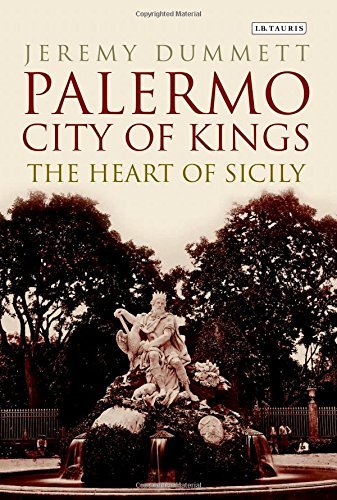This title is currently out of stock. Leave us your email address, we’d let you know when it’s in stock again!
-

A note on book covers: while we do our best to ensure the accuracy of cover images, ISBNs may at times be reused for different editions of the same title which may hence appear as a different cover.
Palermo, City of Kings: The Heart of Sicily
Palermo, City of Kings: The Heart of Sicily
Couldn't load pickup availability
Palermo became the capital of Sicily under the Arabs in the ninth century. Until then, Syracuse had been the leading city of Sicily. Palermo blossomed under the Arabs and Normans, with influences visible today. It played a significant role in the Sicilian Vespers when the island rose against the French. In 1860, Sicily was freed from Spanish Bourbon rule by Garibaldi and joined the newly formed Kingdom of Italy. Many notable writers, including Goethe, Henry Swinburne, and Maupassant, wrote about the city.
Palermo's monuments are striking and unusual, from the Byzantine mosaic of Christ Pantocrator in the Palatine Chapel within the Norman palace, to sculptures by Giacomo Serpotta in the oratories, the decorative piazzas Pretoria and Quattro Canti, the Arab-Norman style Cathedral, and the Norman complex at Monreale. The city has also produced world-class writers and artists, including Giuseppe Tomasi di Lampedusa and Renato Guttuso.
This book serves as an essential guide for visitors and can also be enjoyed as a standalone history of Palermo and its significance at the heart of Sicily.
Details of Book
Related Collections:
A note on book covers: while we do our best to ensure the accuracy of cover images, ISBNs may at times be reused for different editions of the same title which may hence appear as a different cover.

-
One Line Summary
Rich history and art of Sicily’s vibrant capital.
-
Who is this book for?
If you're curious about Palermo's complex history and stunning monuments, this book is a lovely entry point. It captures the city’s diverse influences from Arabs to Normans and its vibrant cultural scene, making it perfect for history buffs and art lovers alike. Readers often enjoy how it paints a vivid picture of Palermo’s grandeur and grit, inviting you to explore its streets with new understanding and appreciation.

